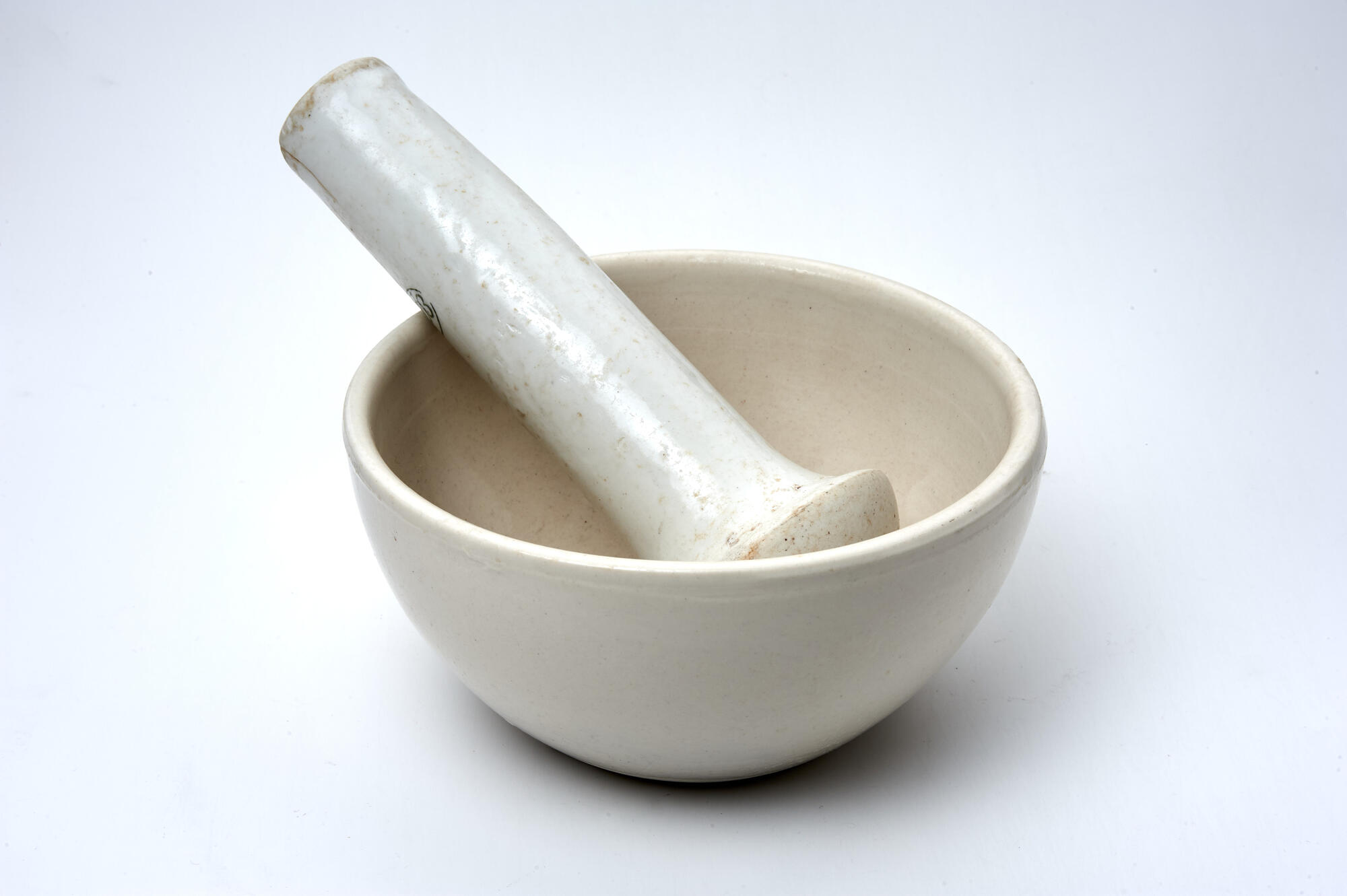Some of the items presented in the exhibition were received by the museum from Pharmacy No. 2, which was located in that building until 2011. Generally, these are laboratory dishes of the Soviet era. Their form and methods of use practically have not changed over the past few centuries. Therefore, the mortar and pestle of the middle of the 20th century are no different from their pre-revolutionary predecessors.
A mortar is a container in which any products were beaten and ground. They come in two types, depending on the base: floor or ground and table — it is also called manual. Mortars also differ in material: porcelain, glass, wooden, stone. The same material was also used to make a pestle, an elongated object used to crush and grind substances.
The stone stupa and pestle are one of the oldest tools known, dating back 8,000 years BC. They were used to grind grain and other food products. Mortar and pestle were often used by doctors, healers, and then by pharmacy employees. It was often difficult to grind substances, this work required physical strength. However, usually the monotonous work was entrusted to the apprentices of pharmacists, the youngest employees.
In pharmacies, stone, metal and porcelain mortars were mainly used. The latter were covered with glaze only on the outside — the inner surface remained rough and played the role of a fine grater. For effective grinding, very little substance was poured into the mortar, slightly covering the bottom. For a long time, the mortar and pestle epitomized pharmacy: if today a cross is placed over pharmacies, back then these tools were depicted in front of the entrance. The symbol is still used today on the emblems and coats of arms of the universities that train pharmacists and qualified pharmaceutical chemists. Among them is the Pyatigorsk Medical and Pharmaceutical Institute, a branch of the Volgograd State Medical University.
There are now seven sizes of laboratory mortars and four sizes of pestles. Mortars with pestles can be found in modern kitchens — they are used to grind and beat. There are now seven sizes of laboratory mortars and four sizes of pestles. Pestle mortars can be found in modern kitchens and are used to grind and grind spices.



